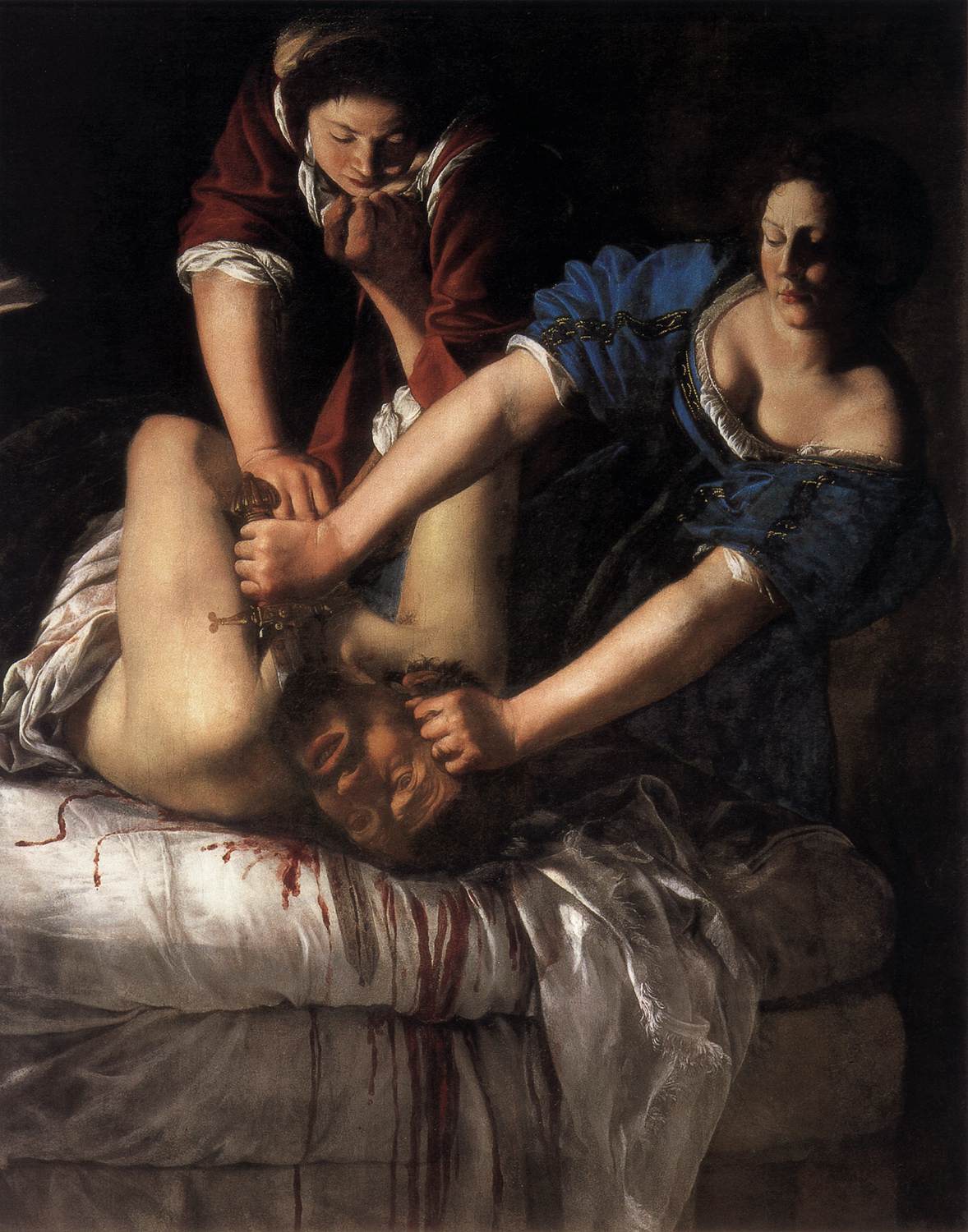The works will speak for themselves. — Artemisia Gentileschi
The praise Baroque painter Artemisia Gentileschi garnered during her lifetime is astonishing.
Not because the work isn’t deserving of the attention, but rather, because she was a young woman in 17th-century Florence.
The first female to be accepted into Florence’s prestigious Accademia delle Arti del Disegno, she was collected by the Medicis and respected by her peers — almost all of them male.
Her style was as dramatic as the subjects she depicted.
One of her most compelling ones, covered in Allison Leigh’s animated TED-Ed lesson, above, comes from an apocryphal book of the Old Testament. It concerns Judith, a comely Jewish widow who, assisted by her maidservant, beheaded the loutish Assyrian general Holofernes, whose forces threatened her town.
This story has attracted many artists over time: Lucas Cranach the Elder, Donatello, Botticelli, Michelangelo, Cristofano Allori, Goya, Klimt, Franz von Stuck, and Caravaggio, the painter whom Artemisia most sought to emulate as a teen.
Artemisia visited Judith and Holofernes several times throughout her career.
Her first attempt, at around the age of 19 or 20, features two healthy-looking young women, their sleeves sensibly rolled so as not to dirty their bright dresses, a prospect that seems much more likely than it does in Caravaggio’s version, painted some 15 years early.
Caravaggio’s Judith is brave, but maidenly, a bit reticent in her snowy frock.
Artemisia’s is a bad ass, sword casually balanced on her shoulder as she checks that the coast is clear before escaping with a basket containing her victim’s head. Although she prayed for the success of her endeavor, this is a woman who might not have needed god’s help to “crush the enemies” arrayed against her people.

Things get even more visceral in Artemisia’s third depiction, painted perhaps 10 years later, after she had married and moved to Florence.
Art historian Sister Wendy Beckett, an unabashed fan, describes the muscular and bloody scene in Sister Wendy’s 1000 Masterpieces:
Gentileschi shows Judith gripping the head and wielding the sword with a ferocity of concentration as she applies herself to the grisly but necessary task, like a practical housewife gutting a fish (there is none of that one stroke and it’s off, beloved of the male painter. The maid might feel qualms, not Judith… The horrified face of the butchered male is balanced by the grimly composed face of the butchering female.

Several years further on, Artemisia again imagined Judith’s flight, in a scene so theatrical, it could be a production still.
It’s easy to imagine that Artemisia’s talent was carefully cultivated by her artist father, Orazio Gentileschi, but when it comes to the ferocity of her depictions, the speculation tends to take on a darker cast.
The TED-Ed lesson brings up her rape as a teenager, at the hands of her father’s friend, fellow painter Agostono Tassi. Leigh also provides legal and societal context, something that is often missing from more sensational allusions to this traumatic event.
If you engage with the TED-Ed’s lesson plan more deeply, you’ll find a link to an article on novelist Joy McCullough’s research into 400-year-old court transcripts prior to describing Artemisia’s rape trial in 2019 Blood Water Paint, as well as historian Elizabeth S. Cohen’s essay The Trials of Artemisia Gentileschi: a Rape as History:
Combining irresistibly sex, violence, and genius, like the story of Heloise and Abelard, the rape of Artemisia Gentileschi has been retold many times. So often indeed, and with such relish that this episode overshadows much discussion of the painter and has come to distort our vision of her. In the past as well as in the recent renewal of interest in Artemisia, biographers and critics have had trouble seeing beyond the rape. In her case, the old-fashioned notion that women are defined essentially by their sexual histories continues to reign, as if a girl who suffers assault must be understood as thereafter a primarily sexual creature.
Explore a gallery of Artemisia Gentileschi’s paintings here.
As long as I live I will have control over my being. — Artemisia Gentileschi
Related Content
- Ayun Halliday is the Chief Primatologist of the East Village Inky zine and author, most recently, of Creative, Not Famous: The Small Potato Manifesto. Follow her @AyunHalliday.


Excellent piece, very inspiring artist — but I think you might have repeated the same painting twice, (the first and third images), is that right?